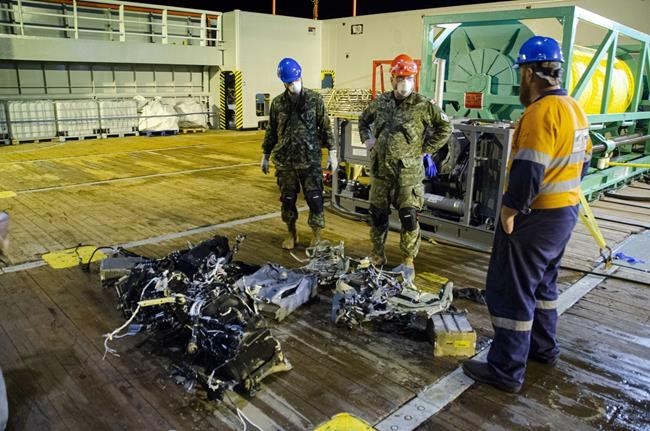OTTAWA — The Canadian Armed Forces is expected to share its plan for getting its Cyclone helicopters back in the air on Tuesday, even as military investigators continue to probe the cause of the deadly crash that forced the fleet to be temporarily grounded.
The Cyclone fleet has been subject to an "operational pause" since April, when the helicopter known as Stalker 22 crashed off the coast of Greece while preparing to land on a Canadian frigate in the Ionian Sea. All six military personnel on board were killed.
A preliminary investigation report released last week said without providing details that Stalker 22 did not respond as the crew expected prior to going into the water, and that investigators were now focusing on "aircraft systems and human factors."
While the Department of National Defence has confirmed the investigation continues, senior military officials were scheduled to provide an update Tuesday on the lifting of the operational pause and resumption of flights for the rest of the Cyclone fleet.
Royal Canadian Air force commander Lt.-Gen. Al Meinzinger said last week that the temporary ground would continue "until a risk assessment on the fleet can be conducted."
"With the co-operation of the directorate of flight safety, a team of airworthiness experts are working closely to develop a plan to methodically and safely return the fleet to operations," he said. "This is critical work and we will take the time to do it right."
The preliminary investigation report did not delve into the specific causes of Stalker 22's crash, but much of the discussion around the incident has focused on the Cyclone fleet's long and problem-plagued development before becoming operational in 2018.
That includes an incident in March 2017, when a software problem in the flight control system caused one of the helicopters to suddenly drop during a test flight. Officials have said the glitch that caused the "triple reset" was subsequently fixed.
That incident led to a nine-week operational pause. Even after it was lifted, some restrictions were placed on the helicopters forbidding crews from performing certain manoeuvres and operations before being eventually phased out.
It remains to be seen whether a similar approach will be taken this time around.
Another Cyclone had a "hard landing" on board the navy's interim support ship while deployed in the Pacific in February, 2019. The helicopter's manufacturer, Sikorsky Aircraft, is continuing to develop the aircraft's software to meet the military's full requirements.
That history had raised concerns about whether the cause of Stalker 22's crash is systemic across the rest of the Cyclone fleet. Sikorsky was to have built 28 fully functioning Cyclones by now, but has so far only provided 18.
The helicopters are typically deployed on board Canadian frigates and used for search and rescue, surveillance and anti-submarine warfare.
This report by The Canadian Press was first published June 15, 2020.
Lee Berthiaume, The Canadian Press




